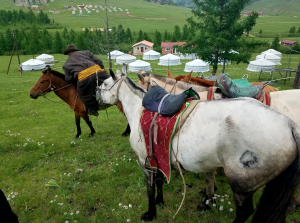 It’s almost impossible to tell the story of Mongolia without inevitably mentioning Chinggis (Genghis) Khan. Seven centuries ago, he exploded onto Mongol and world history with a sonorous impact that still reverberates throughout the nation today. But there is far more to Mongolia than our fanciful musings of green, pastoral steppes trampled by marauding hordes of nomadic warriors on horseback. Indeed, Mongolia is a study in contrast, a traveler’s delight full of scenic nature, rich culture and modern development. [Note, Chinggis is the more modern and phonetically accurate spelling of Genghis.]
It’s almost impossible to tell the story of Mongolia without inevitably mentioning Chinggis (Genghis) Khan. Seven centuries ago, he exploded onto Mongol and world history with a sonorous impact that still reverberates throughout the nation today. But there is far more to Mongolia than our fanciful musings of green, pastoral steppes trampled by marauding hordes of nomadic warriors on horseback. Indeed, Mongolia is a study in contrast, a traveler’s delight full of scenic nature, rich culture and modern development. [Note, Chinggis is the more modern and phonetically accurate spelling of Genghis.]
While Mongolia is on the fast-track towards modernization, especially in its capital of Ulaanbaatar, the country is nevertheless still steeped in ancient tradition and history. The majority of the population lives in gers, traditional round tents of wood and wool that have housed its people for eons. The horse is inextricably tied to Mongol identity. In fact, Mongols call themselves the “the horse people” – a claim few, save perhaps America’s Comanche tribe, would dare challenge. The horse hair fiddle is each family’s proudest possession and people routinely ride Mongolia’s half-wild horses for leisure. Riding them is a thrilling experience, especially for novice riders. The animals are extremely sensitive to movement from the rider and will react with a gallop at even minor motions. If you’re, like me, a novice rider, I strongly suggest having an experienced Mongol guide close to your side.
Meat is central to the Mongolian diet, particularly red meat, which can also include any number of pack animals. Mongols joke that their diet excludes vegetables as they receive all their greens directly from the grasses the animals have previously consumed. This comes as somewhat of a shock to my mindset of prioritizing vegetables over meats. But if you’re going for a Mongolian restaurant, don’t expect much in the way of plant-based side dishes. And all those Mongolian barbecue joints we go to in the US? Turns out they’re not quite as authentic as I had imagined….
- engri, the eternal blue sky, watches over Mongolia’s vast steppes
- Herd of Yak at Ghorki Terelj National Park
Most of us envision that Mongolia as a land of wide open steppes and grasslands. And while that is accurate, the landscape is yet vastly more diverse. Ulaanbaatar itself is nestled in a valley surrounded by low rolling hills. But the land changes dramatically after just a short drive only about 45 minutes to the east. As you enter the massive Gorkhi Terelj National Park, constant rain feeds a lush countryside that is reminiscent of a mini-version of Colorado or Switzerland. Occasionally, the low-lying grey clouds part to reveal rolling hills that give way to rocky outcroppings, small mountains and pine forests. On the way, one can pay homage to history’s greatest monarch at the colossal monument to Chinggis. At 40 meters (~44 yards) tall, it is the the largest equestrian statue in the world and visitors can climb several hundred steps to the top to get a breathtaking panorama view. The statue has been erected on the very spot where legend claims Chinggis found the golden whip that signified his future ascendancy to world domination.
Conversely, take the highway to the west of Ulaanbaatar and you’ll find a dramatically different landscape yet again. The vastly drier climate only about an hour’s drive from the city is immediately apparent as trees swiftly give way to semi-arid grasslands. The sparsely populated countryside to the west of Ulaanbaatar offers little to view beyond low-lying hills while the pothole-ridden highway disappears in a straight line to nowhere into the setting sun. No objects, man-made or natural, obstruct the view, allowing one to appreciate the voluminous breadth and majesty of the blue Mongolian sky. No wonder then that the sky takes a central role in the Mongolian shamanistic religion, known as Tengrism.Stand at the top of a hill in the middle of the Mongolian steppe to gaze at the vast horizon and you’ll quickly understand why Mongols worshipped Tengri, the eternal blue sky. Even today, people suspend a small blue cloth to the top of their ger to symbolize it. This form of Mongolian shamanism, in addition to Buddhism, represent the two major religious belief systems today. Ironically, my new-found Mongol friend and guide Mörn, joked that the third major religion today in Mongolia is basketball. True enough, the sport is practically a national obsession. Drive by any village, town or random farm in Mongolia and you’ll inevitably find children and teenagers playing basketball on a paved court, no matter in what dilapidated state it may be. The American pro basketball league (NBA), so Mörn claims, is Mongolia’s favorite sport to follow.
Coming back to nature, about 100 km to the west of Ulaanbaatar is Khustain (Hustai) Nuruu National Park, home to one of the rarest large mammals in the world, the Prezwalski’s wild horse. This species of horse had actually gone extinct in the wild in the 20th century. Through the joint efforts of Mongolian and European conservationists, the horse was re-bred in captivity (from only about a dozen surviving animals) and introduced back into the wild in the early 1990s. The herd has slowly but steadily grown, representing a shining example of success in the story of modern conservationism. An estimated 130 or so animals roam free today in Hustai preserve. I have actually seen this horse on numerous occasions before, roaming the open range of the San Diego Zoo Safari Park in California. However, viewing the majestic animals in the wild, in their native environment, serene and undisturbed by tourists or human intervention, is a special experience. Prezwalski’s horses are notoriously reclusive – and the stallion can be rather aggressive when he feels disturbed – so visitors to the Hustai are by no means guaranteed a glimpse of the animal. Count your blessings if you do.In fact, count your blessings if you go to Mongolia at all. For most travelers, it is considered completely off the beaten track. For Mongols, however, it is the center of the world. We should be fortunate enough to see it from that perspective.
[Author’s note: all photos taken by me.]


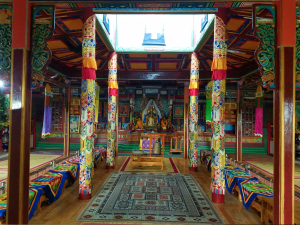

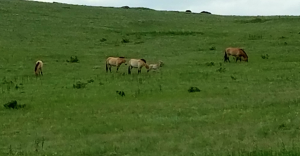

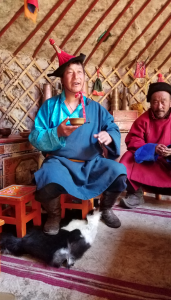

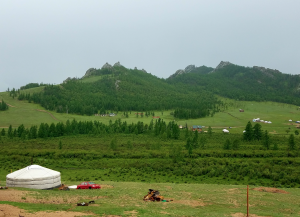
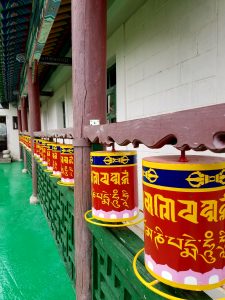
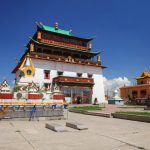
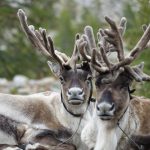
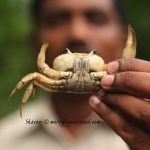

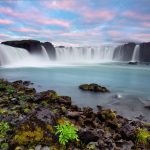
I’ve been looking at visiting Mongolia next year – it won’t be during the winter, I can tell you that Abdul, haha. Seems like there are some cheap flights from Beijing. I will examine this piece in greater detail the closer I get to my trip.